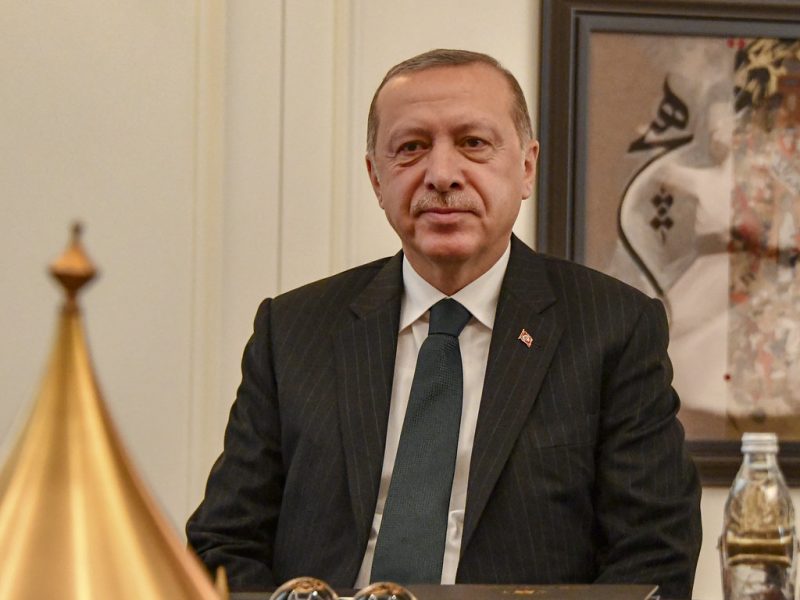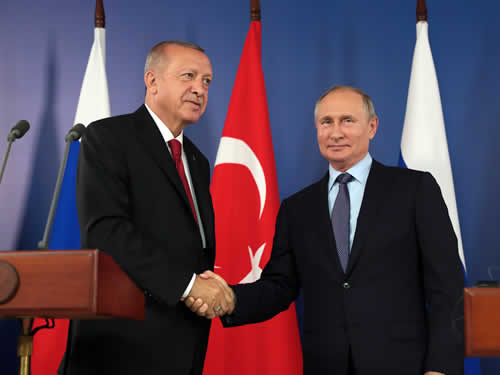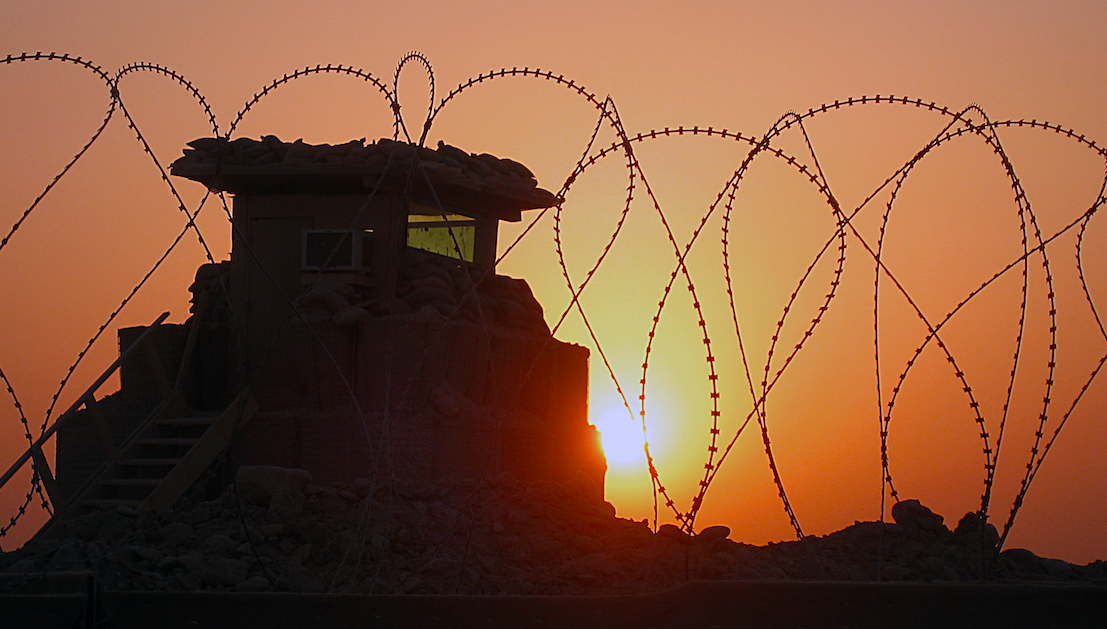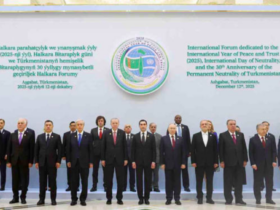The establishment of safe zones in war-torn countries is supposed to entail a reduction in violence. However, in the present situation in Syria, US involvement in the establishment of a safe zone will lead to the direct military entrenchment of Washington, Turkey, Russia, and Syria, and will only cause the situation to deteriorate further.
WHY A SAFE ZONE?
Turkey has always faced security problems on its southern borders. The unrest in Syrian Kurdish areas the came as a result of the recent crisis has greatly exacerbated Turkey’s security problems. Since 2016, Ankara has been trying to secure its southern borders via military intervention in Syria. Erdogan’s most important strategy has been to prevent the formation of a unified Kurdish region in Northern Syria.

Flickr
In December 2016, the Turkish armed forces entered Syria during Operation Euphrates Shield and managed to seize the city of Jarabulus. Furthermore, in January 2018 with Operation Olive Branch, the Turkish armed forces gained control over all of Aleppo’s northern borders with Turkey as they advanced toward the city of Afrin.
In these operations, the Turkish armed forces used troops from the Free Syrian Army and transferred control of the area under its occupation to them afterward.
In 2016, Syrian Kurds had managed to dominate the northern border with Turkey in the Syrian Al Hasakah and Raqqa provinces, as well as the western parts of Aleppo governorate. If Turkey failed to enter Jarabulus, the Syrian Kurds would likely have formed a completely autonomous Kurdish region by linking the northern borders of al Hasakah, Raqqa, and Aleppo provinces. Operation Olive Branch destroyed the hopes of the Syrian Kurds to defeat the Free Syrian Army west of the Euphrates.
Turkey plans to put the Free Syrian Army in control and under the protection of a legal plan by establishing a safe zone.
Nonetheless, Turkey’s other goal is associated with a demographic change in northern Syria. Turkey plans to settle three million displaced Syrians into this safe zone, most of whom are Arabs. This would turn the Kurdish-populated region into an Arab region.
WHAT ARE THE DETAILS OF THE PLAN?
The United States claims that Turkey must coordinate with them to implement this plan as Washington has a vested interest in the Kurdish areas of Syria. Lack of coordination between Turkey and the United States has caused the project to be postponed for months.
Turkey intends to penetrate northern Syria in the province of Aleppoas deep as 32 kilometers. As mentioned earlier, the region is now close to being at the mercy of Turkey and the Free Syrian Army.
The US agrees with Turkey’s military presence in northern Syria and to the establishing of a safe zone; however, it opposes Turkish penetration in northern Syria as deep as 32 kilometers. Washington’s behavior in this context is inconsistent because of the complicated nature of its goals in the region.
The US first goal is to weaken the Syrian government and diminish Bashar al-Assad’s control in Syria, especially in the provinces of Aleppo and Idlib, even at the expense of Turkish dominance in the country.
Washington’s second goal is to satisfy Turkey as a NATO military partner. The United States does not want to contribute to fostering a relationship between Ankara and Moscow by ignoring Turkish demands.
Nevertheless, Turkey has announced an upcoming offensive of the Turkish army into the areas of eastern Euphrates, now controlled by US-backed Kurdish forces. The plan could jeopardize US interests in northern Syria.
MAP OF DIVISIONS IN NORTHERN SYRIA
The northern parts of the provinces of al-Hasakah, Raqqa, and Kobani in the Aleppo governorate are currently occupied by Kurdish forces, and the rest of the northern areas of the Aleppo province are entirely controlled by Turkey. However, the city of Manbij south of Jarabulus and Ayn Daqnah village south of Azaz in Aleppo province are still under the control of the Kurds, which will put them under threat if Turkish armed forces penetrate as deep as 32 kilometers into the region.
THE US ROLE IN THE NORTHERN SYRIAN CRISIS
The most crucial issue between Turkey and the US is related to the Syrian Kurds. Turkey considers the Syrian democratic forces a threat to its borders.
This conflict of interests between Ankara and Washington has led to the current situation in northern Syria.
Turkey’s concerns seem justied; however, “the US military and logistic support for the Syrian democratic forces” lacks justification.
The fact is that the United States plans to prolong the crisis in Syria by fomenting unrest in northern Syria, forcing Erdogan to continue the fight against the groups that Turkey considers enemies. This will lead to a conflict between Turkey, Syria and Russia, which is what is happening now north of Hama province and south of Idlib province. In the course of these conflicts, Turkey has denied supporting the groups engaged in combat with the Syrian army.
THE POSITION OF THE COUNTRIES IN THE REGION TOWARDS THE ESTABLISHMENT OF A SAFE ZONE
Iran is the most important country that has opposed the plan. Despite having good relations with Ankara, Tehran is opposed to any military presence in Syria and believes that the military presence of other countries should be subject to the authorization of the Assad government.
Saudi Arabia and Israel are also against this plan, but for different reasons than Iran. Riyadh and Tel Aviv believe the implementation of a safe zone will boost Erdogan’s regional power.
Riyadh plans to re-enter the Syrian crisis by using its economic influence in the east of the Euphrates region to diminish the Turkish-Iranian influence in Syria. This Saudi initiative is also supported by the United States.
TURKEY’S SOLUTIONS AND CHALLENGES
Ankara faces three critical challenges for the implementation of the safe zone plan:
Kurds: Changing the demographic fabric of northern Syria from a Kurdish region to an Arab region by Turkey will definitely result in coordination among all Syrian Kurdish forces. The Syrian Kurds will never allow Turkey to do so, and Erdogan is undoubtedly aware of it.
Russia and Syria: Turkey’s other move is to equip the anti-Assad government forces in the Idlib province, to put pressure on the Syrian and Russian governments. On the other hand, Syria has begun recapturing control of the city of Khan Shaykhun by taking control of Idlib province which would disarm Turkey.
The United States and Saudi Arabia: Erdogan knows well that the US on the one side cannot abandon its interests in Syria and on the other side, lacks the capability of waging a campaign on Syrian territory. Turkey will use its proximity to Russia as a bargaining chip against the United States to force trump to recognize Erdogan’s programs in northern Syria. The purchase of the S-400 missile system was made in the same vein.
RUSSIA’S ROLE IN CRISIS RESOLUTION
As of right now, Russia is the most important player in the mix. Moscow opposes the plan; however, it has not acted as an opposition force but has entered as a mediator.

Moscow believes that the Adana Agreement concluded between Turkey and Syria in 1998 would ensure Turkish security on its southern borders. The Turkish armed forces can go into Syria to pursue the PKK forces up to 5 km, according to this plan.
So far, the Syrian government has not taken any military action against the Turkish armed forces and is not willing to solve the problem using the army, and it is doubtful that Bashar al-Assad would resort to the military to counter the establishment of a safe zone in northern Syria. Assad gave the initiative to Moscow so that Vladimir Putin could dissuade Turkey from doing so through consultation and diplomacy.
So far, Moscow has played a mediating role in the Syrian crisis and has been able to prevent conflict between the countries involved.

















Leave a Reply